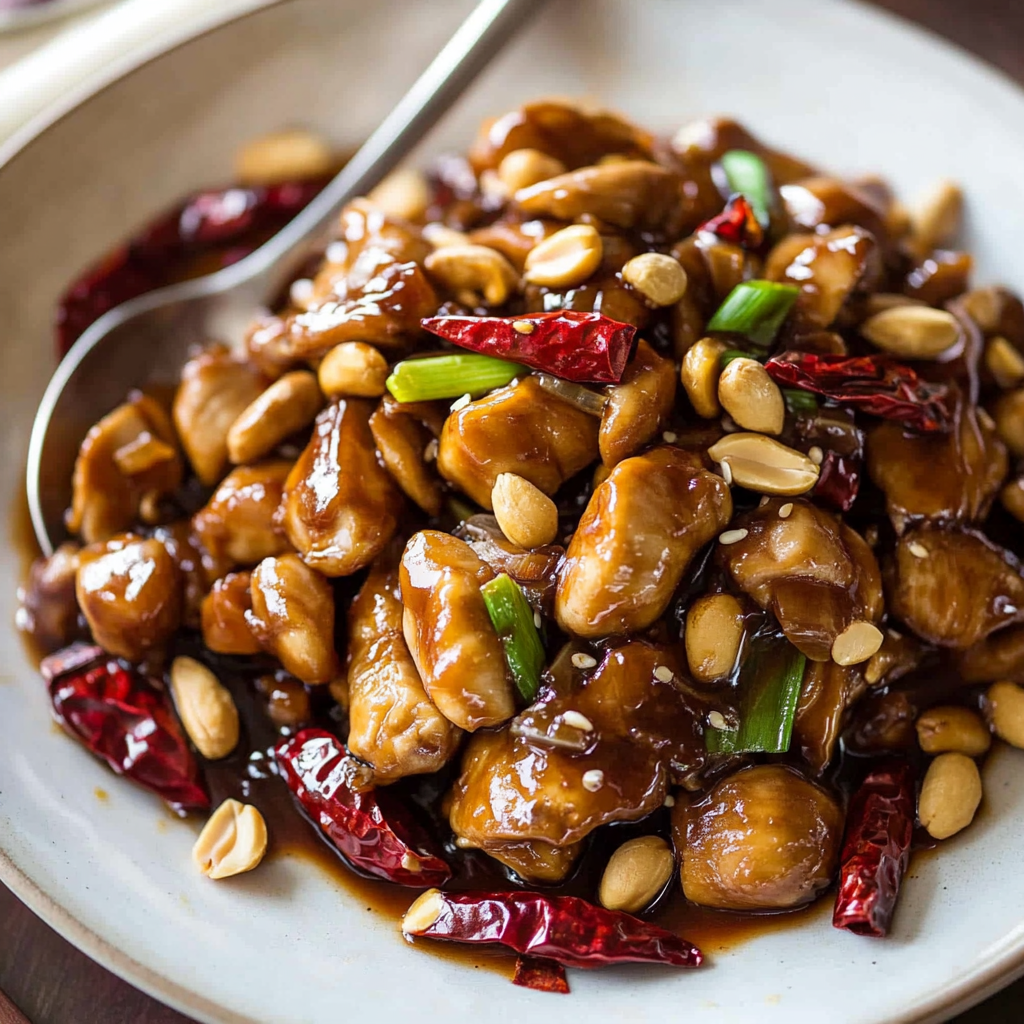
Kung Pao Chicken
A traditional Chinese stir-fry that delivers bold, spicy, and tangy flavors with a signature numbing sensation from Sichuan peppercorns. This dish captures the essence of authentic Kung Pao Chicken, balancing savory, sweet, and sour elements harmoniously.
Print
Pin
Ingredients
For the Chicken
- 500 g 1 lb boneless chicken thigh, diced into bite-sized portions
- For the Sauce
- 1 tablespoon Chinese cooking wine
- 1½ tablespoons dark soy sauce
- 2 tablespoons Chinese black vinegar
- ⅓ cup water
- 3 tablespoons sugar
- ½ teaspoon sesame oil
- 1 tablespoon light soy sauce
- 2 teaspoons cornflour cornstarch
For the Stir-Fry
- 2 tablespoons peanut oil or preferred cooking oil
- 1 teaspoon finely chopped fresh ginger
- 3/4 cup roasted unsalted whole peanuts or ½ cup halved
- 6 –10 dried red chillies deseeded and chopped into 2cm pieces
- 1½ teaspoons ground Sichuan peppercorns to taste
- 3 green onions sliced into 2cm lengths, whites and greens separated
- 2 cloves garlic minced
Instructions
- Combine cornflour with light soy sauce in a small bowl, stirring until fully dissolved, then incorporate the remaining sauce ingredients except for the water.
- Pour 1½ tablespoons of this mixture over the prepared chicken, ensuring an even coating, and let it marinate for 10 to 20 minutes. Mix the reserved water into the remaining sauce.
- Heat the oil in a wok over high heat. Sauté the garlic, ginger, and dried chillies until aromatic, about 30 seconds.
- Add the marinated chicken and stir-fry until it begins to whiten. Incorporate the white sections of the green onions and continue cooking until the chicken is cooked through, approximately 2 more minutes.
- Stir in the remaining sauce along with the Sichuan peppercorns. Simmer the mixture, stirring continuously, until the sauce thickens and reduces to a glossy consistency.
- Fold in the peanuts and the green parts of the onions just before finishing. Taste and adjust the heat level with additional Sichuan pepper if desired.
- Serve immediately with steamed rice, or opt for cauliflower rice for a lighter alternative.
Notes
Chicken thigh offers superior juiciness, but chicken breast or tenderloin can be used. For tender breast, use velveting technique.
If substituting sauces or vinegar, refer to equivalent types like all-purpose soy sauce or rice wine vinegar.
Adjust the quantity of dried chillies based on spice tolerance. Test a piece beforehand.
Sichuan peppercorns can vary in heat; begin conservatively and add more as needed for the desired numbing effect.
Nutritional data is based on use of chicken thighs and includes peanut calories.